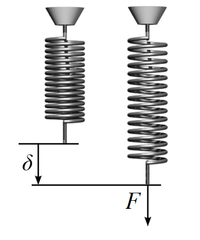
Photo from wikipedia
Cells migrate in vivo through channel-like tracks. While polydimethylsiloxane devices emulate such tracks in vitro, their channel walls are impermeable and have supraphysiological stiffness. Existing hydrogel-based platforms address these issues… Click to show full abstract
Cells migrate in vivo through channel-like tracks. While polydimethylsiloxane devices emulate such tracks in vitro, their channel walls are impermeable and have supraphysiological stiffness. Existing hydrogel-based platforms address these issues but cannot provide high-throughput analysis of cell motility in independently controllable stiffness and confinement. We herein develop polyacrylamide (PA)-based microchannels of physiological stiffness and prescribed dimensions for high-throughput analysis of cell migration and identify a biphasic dependence of speed upon confinement and stiffness. By utilizing novel four-walled microchannels with heterogeneous stiffness, we reveal the distinct contributions of apicolateral versus basal microchannel wall stiffness to confined versus unconfined migration. While the basal wall stiffness dictates unconfined migration, apicolateral stiffness controls confined migration. By tracking nanobeads embedded within channel walls, we innovate three-dimensional traction force measurements around spatially confining cells at subcellular resolution. Our unique and highly customizable device fabrication strategy provides a physiologically relevant in vitro platform to study confined cells.
Journal Title: Nano letters
Year Published: 2022
Link to full text (if available)
Share on Social Media: Sign Up to like & get
recommendations!